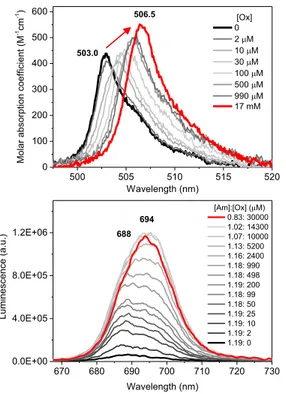2019 ⦽ǎႊᔍᖒ⠱ʑྜྷ⦺⫭ ⇹ĥ⦺ᚁݡ⫭ םྙ᧞Ḳ
397
Spectroscopic and Computational Studies on Am(III)-Dicarboxylate Complexes
H.±K. Kim1,*, K. Jeong2, H.±R. Cho1, E. C. Jung1, K. Kwak3, and W. Cha1
1
Korea Atomic Energy Research Institute, 111, Daedeok-daero 989beon-gil, Yuseong-gu, Daejeon, Republic of Korea
2
Korea Military Academy, 574, Hwarang-ro, Nowon-gu, Seoul, Republic of Korea
3
Korea University, 145, Anam-ro, Seongbuk-gu, Seoul, Republic of Korea *hkim11@kaeri.re.kr
1. Introduction
The long-term safety assessment of the deep geological disposal of spent nuclear fuel requires a thorough understanding of the actinide chemistry in natural aquatic systems. Organic matter including humic acids in groundwater is one of the major components that increase the mobility of the actinides by a strong complexation with highly positively charged actinide ions [1]. Carboxylate in organic matters is a key functional group directly interacting with actinide ions, and small carboxylate ligands are abundant in aquatic systems. To understand the chemical interactions of organic carboxylate groups with Am(III), we investigated the Am(III) interactions with a series of alkyl dicarboxylate ligands with an increasing carbon chain length: oxalate (Ox), malonate (Mal), and succinate (Succ).
UV-Vis spectrophotometry coupled with liquid waveguide capillary cell (LWCC) and time-resolved laser fluorescence spectroscopy (TRLFS) were employed for monitoring the complex formation reactions. The speciation and formation constant of each complex estimated from the experimental results will be discussed in this presentation. Probable molecular structures of the complexes optimized through DFT calculations will also be discussed.
2. Experimental
2.1 Sample Preparations
241
Am was purified as described in our previous study [2]. Quantitative and qualitative analysis of the purified 241Am were carried out by using liquid scintillation counting, gamma and alpha radiation spectrometry [2]. Sodium dicarboxylate solutions were prepared in 0.1 M NaClO4 and pH was adjusted
to be in the range of pH 6 ± 6.3 by adding HClO4.
Am(III) solutions were also prepared in 0.1 M NaClO4 and pH 6 ± 6.3. Am(III)-dicarboxylate
samples were prepared by adding dicarboxylate solutions into fixed volume of Am(III) solutions.
2.2 UV-Vis-LWCC and TRLFS
UV-Vis absorption spectra were measured by using Cary3 (Varian) coupled with a LWCC (WPI) with an optical path-length of 100 cm. Luminescence spectra were collected by TRLFS equipped with a nanosecond pulsed laser (OPO, Vibrant B, OPOTEK Inc.) as an excitation source (503 ± 507 nm, ~3.5 mJ), a spectrograph (SR-303i, Andor Technol.), and an intensified CCD (ICCD, iStar, Andor Technol.). All the measurements were carried out at 25ଇ. Absorption spectra were deconvoluted to individual spectra by using the HypSpec program.
3. Results and Discussion
Absorption and luminescence spectral shifts towards the longer wavelength direction were observed as the concentrations of the ligands increased. Fig. 1 shows a representative spectral changes of Am(III) upon reaction with Ox as an example. Ligand-dependent molar absorption
398
2019 ⦽ǎႊᔍᖒ⠱ʑྜྷ⦺⫭⇹ĥ⦺ᚁݡ⫭םྙ᧞Ḳcoefficient changes and formation constants changes were investigated. Speciation of each complex was conducted by deconvolution of the absorption spectra. Formation constants obtained from the deconvolution processes are in good agreements with those estimated in the NEA-TDB review [3].
500 505 510 515 520 0 100 200 300 400 500 600
Molar absorption coefficient (M
-1cm -1) Wavelength (nm) [Ox] 0 2 PM 10 PM 30 PM 100 PM 500 PM 990 PM 17 mM 503.0 506.5 670 680 690 700 710 720 730 0.0E+00 4.0E+05 8.0E+05 1.2E+06 688 [Am]:[Ox] (PM) 0.83: 30000 1.02: 14300 1.07: 10000 1.13: 5200 1.16: 2400 1.18: 990 1.18: 498 1.19: 200 1.18: 99 1.18: 50 1.19: 25 1.19: 10 1.19: 2 1.19: 0 Luminescence (a.u.) Wavelength (nm) 694
Fig. 1. Absorption (upper) and luminescence (bottom) spectra of Am(III) in the presence of various Ox concentrations. Concentrations of the Am(III) and Ox
varied between 1.19 ± 0.83 ȝM and 0 ± 30 mM, respectively.
Luminescence spectra of Am(III) in the presence of the each ligand exhibited significantly enhanced intensities with prolonged lifetimes. Am(III)-Ox complexes induced the most pronounced changes in the absorption and luminescence spectral properties followed by the Mal and Suc ligands in the order. Luminescence lifetime changes measured by TRLFS suggest that the examined dicarboxylic ligands bind to Am(III) via a bidentate binding mode. Optimized structures by DFT calculations further suggest side-on bidentate bindings of the ligands that are stabilized by forming 5, 6, and 7-membered rings for the Ox, Mal, and Suc ligands, respectively.
In this presentation, we will discuss on the detailed spectral property changes of Am(III) and strength of chelating effects by the two carboxylic groups depending on the distance between them. The results will also be discussed in comparisons to those reported for Eu(III) and Cm(III) complexes with the aliphatic dicaboxylate ligands [4,5].
REFERENCES
[1] McCarthy JF, Sanford WE, Stafford PL: "Lanthanide Field Tracers Demonstrate Enhanced Transport of Transuranic Radionuclides by Natural Organic Matter". Environmental Science & Technology, 32:3901-3906 (1998).
[2] Kim H-K, Cho H-R, Jung EC, Cha W: "Radioanalytical and spectroscopic characterizations of hydroxo- and oxalato-Am(III) complexes". Journal of Nuclear Fuel Cycle and Waste Technology 16:397-410 (2018).
[3] Hummel W, Anderegg G, Rao L, Puigdomenech I, Tochiyama O: Chemical thermodynamics Vol. 9: Chemical thermodynamics of compounds and complexes of U, Np, Pu, Am, Tc, Se, Ni and Zr with selected organic ligands. Amsterdam, The Netherlands: Elsevier 2005.
[4] Wang Z-M, van de Burgt LJ, Choppin GR: "Spectroscopic study of lanthanide(III) complexes with aliphatic dicarboxylic acids". Inorganica Chimica Acta, 310:248-256 (2000). [5] Fröehlich DR, Trumm M, Skerencak-Frech A,
Panak PJ: "The complexation of Cm(III) with succinate studied by time-resolved laser fluorescence spectroscopy and quantum chemical calculations". Inorganic Chemistry, 55:4504-4511 (2016).
